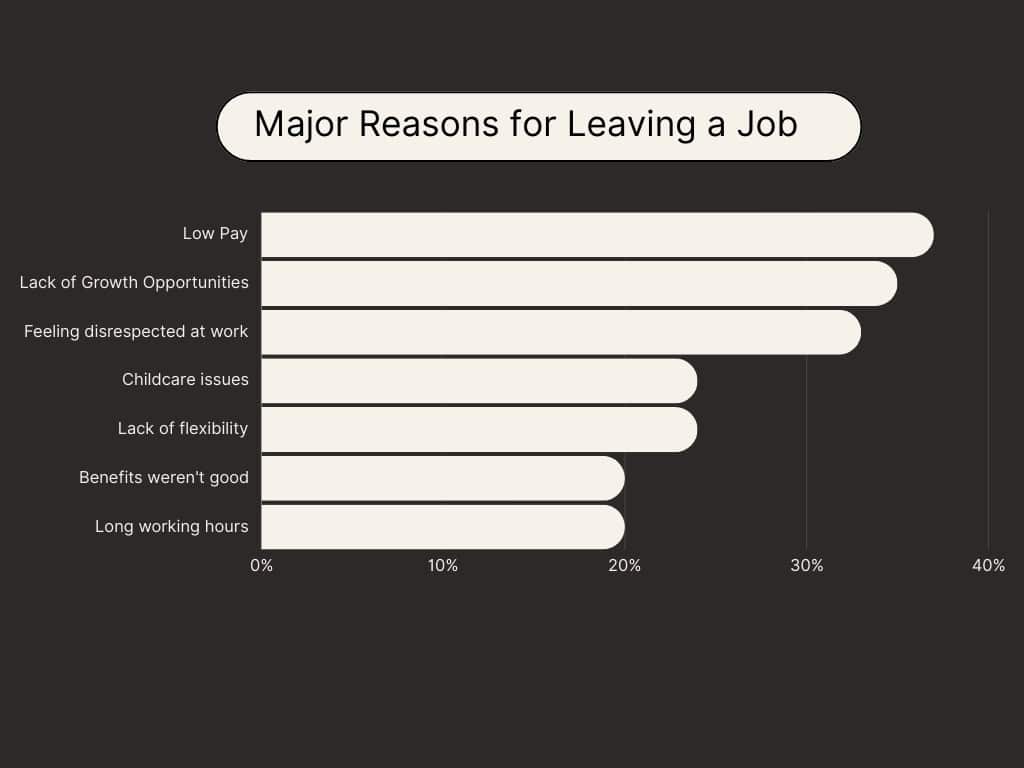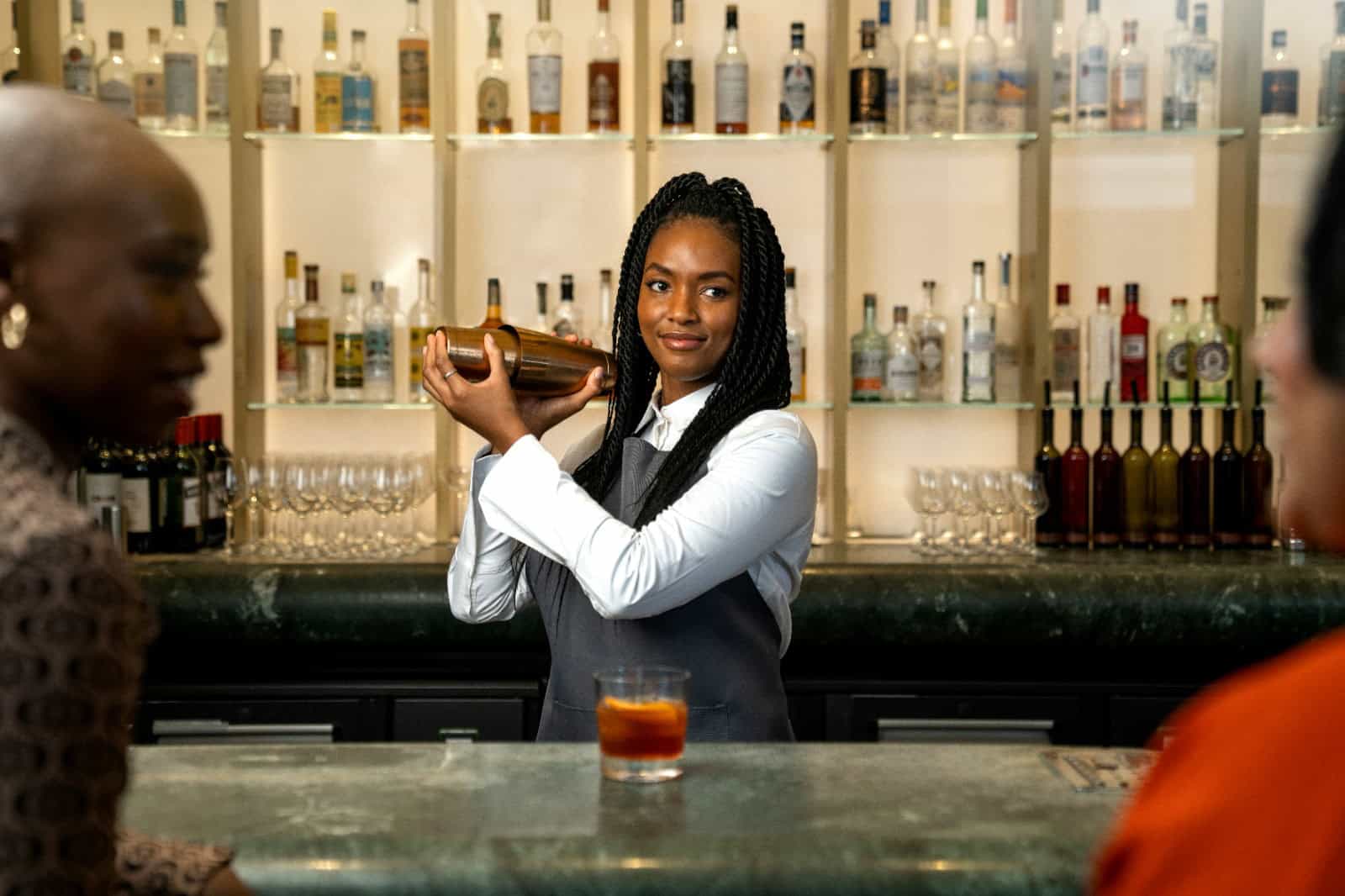
+24 Employee Retention Statistics & Tips For Small Businesses
Employee retention is a pressing concern for small businesses, where finding reliable staff can be a hurdle. Having retention programs might seem daunting and costly, especially when offering competitive pay is already challenging. In this article, we’ll discover 2024 employee retention statistics and explore strategies to navigate these challenges effectively.
What is Employee Retention?
Employee retention refers to the ability of an organization to keep its employees engaged and satisfied, thereby reducing turnover rates. It encompasses various strategies aimed at fostering a positive work environment where employees feel valued, supported, and motivated to stay with the company.
However, the misconception that retention strategies are reserved solely for large corporations overlooks the significant advantages they offer to small and medium-sized businesses (SMBs).
SMBs can reap even greater benefits from prioritizing employee retention efforts, particularly considering the financial strain of frequent hiring and the detrimental effects of understaffing, such as compromised customer care and decreased productivity.
Additionally, the considerable time invested in training and onboarding new employees can divert managerial focus from essential responsibilities and hinder your business’ growth.
5 Employee Retention Strategies for Small Businesses
Optimizing employee retention statistics often requires innovative yet resource-efficient approaches. Here are some actionable strategies tailored to the time and budget constraints commonly faced by SMB owners and managers:
Create Recognition and Appreciation Initiatives
Implementing simple yet effective recognition and appreciation programs can go a long way in boosting employee retention statistics. This could include employee of the month awards, personalized thank-you notes, or small tokens of appreciation.
Cultivating a Positive Work Environment
Simple gestures such as fostering open communication, promoting teamwork, and having an open feedback system can generate a supportive atmosphere that can significantly impact employee morale and motivation. Encouraging regular team-building activities or social events can also contribute to a sense of camaraderie and belonging among employees.
Provide Professional Development Opportunities
Offering opportunities for training, workshops, or skill development courses, even on a modest budget, can show employees that their growth and career advancement are valued by the organization. If you’re a restaurant owner, for example, you could provide your kitchen staff with access to cooking classes and workshops on food safety and sanitation practices.
Create Flexible Working Schedules
For jobs that require physical presence, try to be as flexible as possible with shifts and working hours. You can let the employees choose their shifts based on their availability and preferences, allowing for a better work-life balance.
Be Transparent with Your Team
Keep your team members informed about important business decisions, changes in policies, and any challenges the company may be facing. This not only builds trust but also encourages open communication and collaboration, leading to higher levels of engagement and job satisfaction. Furthermore, transparency helps employees understand the rationale behind management decisions, reducing uncertainty and fostering a sense of ownership in the company’s success.
+24 Employee Retention Statistics
Understanding employee retention statistics allows small business owners to build a stable and dedicated workforce. These statistics provide insights into factors influencing turnover, helping businesses develop effective strategies. Let’s take a look!
1. Top 3 reasons people leave their jobs
According to a survey by Statista, the top three reasons for job turnover are low pay (37%), a lack of advancement opportunities (35%), and feeling disrespected at work (33%). Addressing these issues can help businesses create a more supportive and satisfying work environment, ultimately improving employee retention.

2. Turnover rates by industry
By the end of 2023, the average turnover rate in the United States was 41%. However, turnover rates vary significantly by industry, with the hospitality sector experiencing the highest turnover rate at nearly 80%.
| Industry | Turnover Rate |
|---|---|
| Leisure & Hospitality | 79% |
| Professional & Business Services | 57% |
| Construction | 54% |
| Trade, Transportation, and Utilities | 49% |
| Manufacturing | 37% |
| Information | 32% |
| Financial Activities | 29% |
| Government | 18% |
3. Retaining employees is one of the main challenges for small business
At Job Today, we surveyed employers about their top business challenges. The most pressing issue, cited by 38% of respondents, was finding reliable entry-level employees who consistently show up on time and perform well. The second major challenge, mentioned by 35%, was providing competitive pay and benefits to attract and retain staff. Finally, 34% of employers identified high employee turnover as their third most significant concern.
4. Top 3 consequences of not being able to hire employees
In Job Today’s survey, employers listed the most impactful consequences of not being able to hire reliable staff. The following topics were the most cited.
| Consequence | % of Employers Who Selected It |
|---|---|
| Bad customer service hurts customer loyalty | 43% |
| Difficulty adapting to what the customers want, resulting in less income | 39% |
| Owner working more hours to cover open positions | 39% |
5. Almost half of Americans plan to leave their jobs in 2024
The number of people planning to leave their jobs has increased since 2021, when it accounted for 40% of working Americans. By 2024, this figure has risen to 48% of the workforce.

6. Only 28% of Americans would recommend their employers as a great place to work
Employees can be powerful brand ambassadors, and this metric significantly impacts not just retention but also the overall reputation of small and medium-sized businesses (SMBs).
7. Companies with high employee engagement experience 18% lower turnover rates
How does employee engagement affect turnover rates? A Gallup study reveals that in companies with high turnover, focusing on employee engagement has led to an 18% reduction in employee churn.
8. Almost 80% of voluntary turnover is preventable
A significant 77% of voluntary turnover could be prevented. When examining why employees leave their jobs, it was found that 48% of these reasons are tied to a lack of employee engagement, such as limited growth opportunities and unrealistic job expectations. Additionally, 28% of the main reasons for leaving a job relate to work-life balance issues.
9. 28% of Americans love their jobs enough to stay
For 28% of the US workforce, passion for their job is a compelling reason to stay. Additionally, 26% of employees would consider leaving their current position only if they found an opportunity that offers better pay and benefits.
10. Loyalty to employers is higher among older generations (aged 55+)
Loyalty to employers shows a notable generational difference. Less than one in five (19%) employees aged 18-34 report loving their job enough to stay with their company for any reason, whereas over two in five (42%) employees aged 55+ share this sentiment.
+ See 2024 Job Interview Statistics
11. Influence of colleagues’ resignation on team turnover
Employees on the same team as a departing colleague are 9.1% more likely to resign within the next 135 days compared to those not on that team.
12. Resignation contagion is higher in small teams
Resignation tendencies are amplified in smaller teams, where employees are 25% more likely to quit within the next 135 days compared to their counterparts in larger teams.
13. Companies spend about $4,700 per hire
Companies typically spend approximately $4,700 per hire, encompassing expenses for recruitment, onboarding, and training. This figure highlights the substantial financial investment involved in bringing new employees on board, not including potential productivity losses from other team members during the onboarding period. The data is from the Society for Human Resource Management (SHRM).
14. 44% of businesses plan to increase hiring in 2024
44% of businesses expect to increase their hiring efforts in 2024. While these efforts may extend throughout the year, the majority was anticipated to be concentrated within the first six months.
15. Fewer than one in four employers expect a decrease in retention in 2024
Fewer than one in four employers, or 22%, expect a decrease in retention in 2024. However, this cautious optimism contrasts sharply with the fact that 50% of employees plan to quit their jobs in the same year. This disconnect highlights the challenges employers face in balancing hiring efforts with retaining their existing workforce.
16. More than half of employers hope to maintain their company’s retention rates in 2024
While some employers are aware that employee retention statistics might decrease in 2024, 51% still hope to maintain their company’s retention rates steady.
17. From 2020 to 2024, the number of workers in the US decreased by 2.3 million
According to the US Chamber of Commerce, there are currently more jobs than employees in the United States. Without enough workers to fill open positions, companies struggle to meet demand, innovate, and maintain a competitive edge.
18. Industries with the highest employee shortages are Professional and Business Services, Financial Activities, Leisure and Hospitality
The US Chamber of Commerce points out that sectors with lower wages, such as retail and hospitality, suffer the most from constant employee turnover. On the other hand, workers in industries that offer a large number of entry-level jobs experience unemployment rates higher than the national average.
19. Job openings outnumber job seekers in the US
In the US, there are currently 8.5 million open positions but only 6.5 million job seekers. The US Chamber of Commerce attributes this employee shortage to the pandemic, which led to the closure of over 120,000 businesses and left more than 30 million workers unemployed.
As businesses began to reopen, there was a significant surge in job opportunities. However, the rate of reemployment has slowly climbed, resulting in a persistent gap between available jobs and job seekers.
20. There are 76 workers for every 100 open jobs in the US
When posting a job on any job board, app, or website, candidates tend to respond quickly. However, the Chamber of Commerce highlights a significant issue: not all vacancies can be filled, as there are only 76 workers available for every 100 job listings
21. In New York, there are 87 workers for every 100 open jobs
Nearly every state in the US now has more job openings than before the pandemic. On average, job openings have grown by 27% between 2020 and 2024 across the country.
The states with the highest increase in job openings in the same period are Colorado and South Carolina, each seeing a 50% rise. New York, along with California (92 job seekers per 100 jobs), Nevada (93 job seekers per 100 jobs), Michigan (85 job seekers per 100 jobs), and New Jersey (84 job seekers per 100 jobs), are among the states with a more balanced ratio between job offers and job seekers.
22. Employee tenure has decreased for the majority of job occupations
Over the past decade, employee tenure has decreased across nearly every job occupation, with blue-collar jobs being the hardest hit. Occupations experiencing the largest declines include:
| Job Occupations | Employee Tenure Decrease (2010-2020 |
|---|---|
| Computer and mathematical positions | -18.8% |
| Transportation and material moving | -17.50% |
| Installation, maintenance, and repair | -17.50% |
| Food preparation and serving | -17.40% |
| Production, transportation, and material moving | -17.40% |
| Farming, fishing, and forestry | -16.70% |
23. Food preparation and serving employee tenure is 1.9 years, the lowest among all job occupations
Historically, food preparation and serving positions have consistently held the shortest employee tenure among all job occupations. Since 2010, these roles have experienced high turnover rates and the briefest tenure compared to other industries.
In 2010, the average employee tenure for food preparation and serving occupations was 2.3 years. A decade later, this period has decreased to 1.9 years.
24. Americans hold an average of 12 jobs in their lifetime
Additionally, on average, individuals change careers approximately 5 times during their work life. However, there is a growing trend where 30% of the workforce changes jobs every 12 months, highlighting an increasing fluidity in employment patterns.
Now that you know the most important 2024 employee retention statistics, are you ready to find candidates committed for the long term?
Post a job on Job Today and experience the difference. Our platform connects you with top talent quickly and efficiently. 72% of employers have interviews scheduled the same day or the day after posting a job. Don’t let high turnover rates hold your business back—join Job Today and find reliable employees fast.



